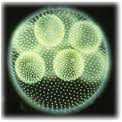This week's assignment spanned a variety of content including "Labels and Annotations", Spatial Analysis, and Three-dimensional (3D) Analysis using a variety of newly introduced functions and concepts. The ESRI Modules for the two latter units were effective and useful. The Module for Labels and Annotations was exceedingly cryptic and, in my opinion, sorely lacking in instructional value. I would certainly recommend the two other modules as a learning guide, but the module I think that it might be more effective if UWF personnel develop a more effective practicum for the Labels function given the morasse of crypticism, ambiguity, and tedium asscociated with the ESRI module. I would also suggest that these three modules not be assigned in a single week at the end of the semester given that there have been a few weeks in the Intro to GIS course that were significantly shorter.
The first map shows a layout of information that demonstrates various manipulations of labels including changes in font type, color, etc. and placement.

The second map delves further into prioritization of labelling, placement, and selection of various map symbols within a single layer class.

The first assignment in the Spatial Analyst section of this week's very broad course content was to learn about building a model from an existing database.

This spatial analysis map examines drought tolerance variations within a confined region of a larger map presentation. This exercise introduced us to function in the Spatial Analyst tools section of ArcToolbox.

The figure (below) is a 3D presentation of a hiking trail along a characterized topographic relief. Various function in ArcScene were performed to achieve the resulting figure.

Overall, this week was a discouraging week in what I believe was a good semester...more recently, there have been a number of documents/assignments that have indicated that the class is somehow falling short of the course expectations. However, these comments/remarks have not been accompanied by documentation that the class could follow for improvement. Further, the criticisms have been nebulous to the extent that, when I look at my assignment grades and see that they are all good, ...my question is, "Am I screwing up that bad?...is everyone falling short?...do I know what I'm doing that is not meeting expectations?" ...or are the broad class-wide criticisms a way to pull folks up who may be faltering without telling him/her directly? I'm really enjoying these classes, but it is discouraging to keep reading open-ended criticisms without seeing any solutions being offered to remedy them. Maybe this cumbersome assignment was a way to let us know that "You don't know as much as you think you do". Sorry for the rant, ...just feeling a bit demoralized and deflated right now.














